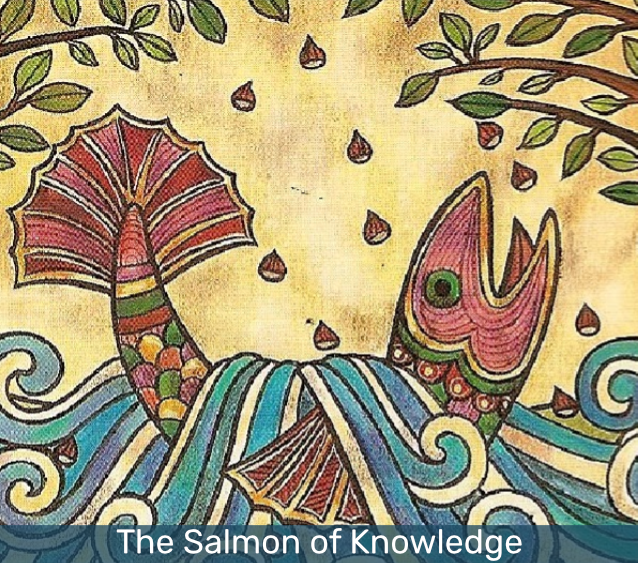
Salmon’s popularity is undeniable. It’s one of the three most popular seafoods eaten in the US (along with shrimp and canned tuna). But how much do you know about America’s favorite fish?

What’s in a Name
The word “salmon” comes from the Latin word salmo or salire, which means “to leap.” It’s no wonder… salmon can jump over 6 feet high to clear obstacles in rivers like rocks, waterfalls and dams. That’s as high as the women’s Olympic high jump record! Pacific salmon belong to the genus Oncorhynchus. The name is derived from the Greek onkos ("hook") and rynchos ("nose"), in reference to the "kype" - the hooked jaw that forms in males during competition for females during mating season.
From Atlantic to Pacific
There are seven species of Pacific salmon. Five of them occur in North American waters: chinook, coho, chum, sockeye, and pink. Masu and amago salmon occur only in Asia. There is only one species of Atlantic salmon...the aptly named Atlantic Salmon. Atlantic salmon and Pacific salmon cannot interbreed, as they have different numbers of chromosomes. Atlantic and Pacific salmon also differ in that an Atlantic salmon can spawn many times, but the pacific salmon dies after spawning once. Atlantic salmon, however, are endangered in the wild. If you see it for sale in the US, you can be assured it is farmed.

What Happens in the River...
Salmon are anadromous, which means they are born in freshwater, migrate to saltwater, and then return to freshwater to spawn. Salmon spend their early years in freshwater rivers and then swim out to sea where they live most of their adult life. When they are ready to spawn, the salmon will return to the river where they were born. Female salmon will lay their eggs into a nest, known as a "redd." Males will swim up and fertilize them, and then the female will cover them gently with gravel. Because of the effort and energy it took for the salmon to travel back upstream, they will die shortly after they spawn. Soon, the fry will hatch and be ready to head out to the saltwater where they will spend most of their adult life.
Red, White… or Grey All Over
Most wild salmon have a flesh color that ranges from reddish orange to pinkish-red. The difference in flesh color comes from their genetically-determined ability to metabolize naturally occurring pigments from their food. These pigments, called carotenoids, are found in their diet of shrimp, krill, and crabs—crustaceans that are rich in astaxanthin, a carotenoid found in most marine life. White, or ivory salmon, lack the ability to store this pigment in their muscle cells and are considered a delicacy. Farmed salmon, who do not get these natural pigments in their diet, have naturally grey flesh unless fed pigmented food.

Salmon Myths and Superstitions
Many Native American tribes depended heavily upon salmon in their diet, so much so that many superstitions arose around the preparation and consumption of salmon. The Chinook tribe knew that if the salmon disappeared, they would go hungry. As a result, the Chinooks would remove the heart of the salmon and burn it, lest its spirit be defiled by dogs or wild animals eating the carcass and preventing the salmon’s return. In Scotland, some fishermen believe that saying the word “salmon” is bad luck for fishing, and will simply refer to it as “red fish”. Then there is the Irish legend of the “Salmon of Knowledge”, where a salmon ate some nuts that fell into the Well of Wisdom and gained all the world’s knowledge. Whoever caught and ate this salmon gained all of the world’s knowledge as well.

Salmon is More Versatile Than You Think
Salmon can be baked, fried, sauteed, grilled… or you can even cook salmon in the dishwasher. Wrap your salmon tightly in foil and put your dishwasher on the highest and hottest cycle for a perfectly poached salmon. If you are looking for something just a little out of the ordinary, yet still traditional and definitely non-weird, try this wonderful cured salmon gravlax recipe from the Sea to Table kitchen.
← Older post Newer post →

